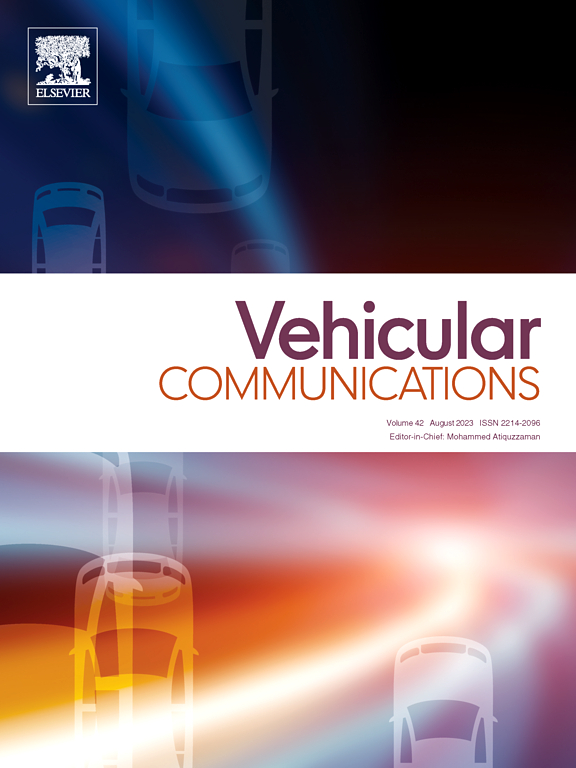Fault tolerant mission management for UAV under random threat using Markov decision process
IF 6.5
2区 计算机科学
Q1 TELECOMMUNICATIONS
引用次数: 0
Abstract
This research introduces a comprehensive framework for mission accomplishment of unmanned aerial vehicles (UAVs) operating in threat-prone zones. Leveraging a Markov Decision Process (MDP), the proposed model ensures mission accomplishment and optimal resource utilization by incorporating UAV state-of-charge, post-fault capabilities, and threat navigation strategies. The framework addresses sensor, actuator, and vision camera faults, enabling dependable operations even under adverse conditions. A key feature of the model is the integration of UAV battery levels to evaluate operational range relative to mission objectives, optimizing task distribution while conserving energy. Additionally, the incorporation of adaptive navigation modes enhances UAV agility and robustness by enabling threat avoidance during operation, closely emulating real-world scenarios. By synthesizing repair protocols, recharging strategies, and stochastic modeling of recurrent goals and threats, the framework offers a holistic solution to improve resilience and mission success in hostile environments. Stochastic dynamic programming ensures the rapid application of precomputed optimal policies during mission execution. A simulation-based case study demonstrates the framework's effectiveness in navigating threats, mitigating faults, and ensuring mission reliability in energy-constrained scenarios.
基于马尔可夫决策过程的无人机随机威胁容错任务管理
本文介绍了一种用于无人机在威胁易发区域执行任务的综合框架。利用马尔可夫决策过程(MDP),该模型通过结合无人机状态、故障后能力和威胁导航策略,确保任务完成和最佳资源利用。该框架解决了传感器、执行器和视觉相机故障,即使在恶劣条件下也能实现可靠的操作。该模型的一个关键特征是集成无人机电池水平,以评估相对于任务目标的作战范围,在节约能源的同时优化任务分配。此外,自适应导航模式的结合增强了无人机的敏捷性和鲁棒性,通过在操作过程中实现威胁规避,密切模拟现实世界的场景。通过综合修复协议、充电策略和反复出现的目标和威胁的随机建模,该框架提供了一个整体解决方案,以提高敌对环境下的恢复能力和任务成功率。随机动态规划保证了任务执行过程中预先计算的最优策略的快速应用。基于仿真的案例研究证明了该框架在导航威胁、减轻故障和确保能源受限场景下任务可靠性方面的有效性。
本文章由计算机程序翻译,如有差异,请以英文原文为准。
求助全文
约1分钟内获得全文
求助全文
来源期刊

Vehicular Communications
Engineering-Electrical and Electronic Engineering
CiteScore
12.70
自引率
10.40%
发文量
88
审稿时长
62 days
期刊介绍:
Vehicular communications is a growing area of communications between vehicles and including roadside communication infrastructure. Advances in wireless communications are making possible sharing of information through real time communications between vehicles and infrastructure. This has led to applications to increase safety of vehicles and communication between passengers and the Internet. Standardization efforts on vehicular communication are also underway to make vehicular transportation safer, greener and easier.
The aim of the journal is to publish high quality peer–reviewed papers in the area of vehicular communications. The scope encompasses all types of communications involving vehicles, including vehicle–to–vehicle and vehicle–to–infrastructure. The scope includes (but not limited to) the following topics related to vehicular communications:
Vehicle to vehicle and vehicle to infrastructure communications
Channel modelling, modulating and coding
Congestion Control and scalability issues
Protocol design, testing and verification
Routing in vehicular networks
Security issues and countermeasures
Deployment and field testing
Reducing energy consumption and enhancing safety of vehicles
Wireless in–car networks
Data collection and dissemination methods
Mobility and handover issues
Safety and driver assistance applications
UAV
Underwater communications
Autonomous cooperative driving
Social networks
Internet of vehicles
Standardization of protocols.
 求助内容:
求助内容: 应助结果提醒方式:
应助结果提醒方式:


